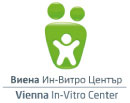Normal physiology and controlled stimulation
|
Ovulation is a prerequisite for obtaining pregnancy. To accomplish this, a follicle containing the ovum is formed in the first days of the monthly cycle. When this follicle reaches a size of 18 to 24 millimeters, a hormonal signal is sent out by the pituitary gland. This causes the follicle to burst and the contained fluid transports the egg cell directly into the tube. There, the ovum awaits fertilization by a sperm cell. In some cases, a hormonal stimulation of the ovaries is required because:
|
 |
To this end, either pills (e.g. Clomiphen) or injections (e.g. Puregon, Gonal-F or Menopur resp. Merional) can be used.
It is important to monitor the hormonal treatment via ultrasound examinations and sometimes via hormonal tests of the blood or urine. In this way, it can be seen whether the hormonal treatment is working, whether a change in dosage is necessary or whether the stimulation is causing the formation of too many follicles. In the latter case there is a risk of multiple pregnancy. The patient is advised not to have unprotected intercourse and not to undergo a possible planned insemination.
In extremely rare cases, the hormonal treatment can lead to the formation of ovarian cysts or of excessive amounts of follicles. However, it is also possible that despite a high-dosed hormonal treatment the ovaries do not react. In this case, the therapy should be terminated and a new attempt should be made at a later time with a different form of stimulation.


